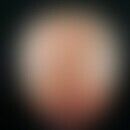Synonym(s)
DefinitionThis section has been translated automatically.
Diamond of carbonic acid. White, easily water-soluble, crystalline substance which is the end product of protein metabolism in the human organism. In human urine about 30g are excreted daily.
Recipes: In recent years, urea (Urea pura) has risen to the top ten active ingredients.
Urea is also approved as a food additive (E 927b).
Pharmacodynamics (Effect)This section has been translated automatically.
Keratolytic and moisturizer.
Urea is hygroscopic and forms so-called clathrates with water (inclusion compounds from which water is only released with a delay). In this property, urea is used as a moisturizer in many preparations in a 3-10% concentration. Urea shows keratolytic effects at concentrations of 20-30%. In 40% concentration urea can be used as "onycholytic".
In connection with glucocorticoids, urea has penetration-promoting effects.
From water-in-oil emulsions only a slow release of the active agent takes place. However, urea penetrates deeply into the epidermis and dermis.
From oil-in-water emulsions urea is released much faster but does not have the deep penetration effect.
You might also be interested in
IndicationThis section has been translated automatically.
Among others, desiccated skin, psoriasis vulgaris, ichthyosis, tinea unguium, s.a. tyrosine kinase inhibitors (side effects);
Standard concentrationThis section has been translated automatically.
3-10% in emulsions, creams and ointments to hydrate the skin
15-20% in emulsions, creams and ointments for keratolysis of the skin
40% - 60% in nail softening pastes.
Standard value in serum: The standard value is between 12 and 50 mg/dl in serum or 2.5 and 8.3 mmol/l; in urine between 13 and 33 g/24h.
Undesirable effectsThis section has been translated automatically.
Skin irritations especially at higher concentrations.
Urea is unstable in solutions or water-containing formulations and gradually decomposes into its starting compounds ammonia (odour nuisance) and CO2. Cave: pH increase.
Acidic pH values, e.g. due to salicylic acid and heat, also cause increased urea decomposition (Wolff G 2014).
Recipe(s)This section has been translated automatically.
- Hydrophilic urea cream 5 or 10% (NRF 11.71.)
- Urea emulsion, hydrophilic 5 or 10% (NRF 11.72.)
- Urea cream hydrophilic 5 or 10% (NRF 11.71.)102
- Urea 10%/salt 3% ointment (W/O)
- Urea 10%/salt 5% ointment (W/O)
- Urea 10%/lactic acid 5% cream (NFA)
- Urea 10%/Chemicals 10% Ointment (NFA) (O/W)
- Urea paste (according to Farber)
- Urea paste 40% (NRF 11.30.)
PreparationsThis section has been translated automatically.
Note(s)This section has been translated automatically.
Especially in aqueous solution or in an aqueous preparation (emulsion type: O/W) urea is unstable. It decomposes into its starting materials. Although the decomposition products are not toxic, the changed pH-value can endanger the stability of other active substances. It is recommended to add a buffer which works slightly in acid to be able to absorb the basic decomposition products. The NRF ( New Formulation Form) provides a lactate buffer for this purpose (Acidum lacticum 1% + 50% Sodium lacticum 4%).
If higher urea concentrations (e.g. 20%) are used it is recommended to use a W/O base (e.g. Eucerinum W/O base or an officinal lipophilic cream [Hydrophobic base cream DAC = NRF 11.104]).
Standard value: The standard value is between 12 and 50 mg/dl in serum or 2.5 and 8.3 mmol/l; in urine between 13 and 33 g/24h.
Pathologically increased: chronic renal insufficiency, acute renal failure, prerenal and postrenal azoteemia, marked protein intake in combination with fluid deficiency.
LiteratureThis section has been translated automatically.
- Wolf G (2009) Urea-frequently occurring active ingredient. dermatologist 60: 86-87
- Wolf G (2013) Polypragmasia in formulations. dermatologist 64: 418-419
- Wolf G (2013) Individual formulations with ready-to-use dermatics. Dermatologist 64: 882-883
- Wolff G (2014) Complex interactions between active ingredient and base. Dermatologist 65: 486-487





